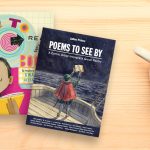Who else feels like you could use some extra space to breathe? Many states across the country have announced stay at home orders due to the coronavirus outbreak. These are challenging and uncertain times for everyone, including students of all ages who are now navigating distance learning. It’s hard enough to manage feelings of fear and uncertainty related to a novel virus, but our students are also doing so while being cooped up and isolated from friends and loved ones.
That made me wonder how we can help young students find ways to navigate their emotions, and my first thought was nature. Spending time appreciating nature has helped me find moments of peace during this difficult time. While we are being asked to stay at home, many states have deemed outdoor activities such as walking pets, hiking, running, or biking to be OK if we can do so while maintaining social distancing. To help, I have developed a list of book recommendations that might allow students to find peace through reading about and experiencing nature.
In addition to making these books available to students, teachers can encourage students to ask their parents for permission to read outside if they are in a safe area properly distanced from others. If students have access to a safe outdoor space, they can be encouraged to spend time away from digital devices observing nature, playing in the dirt, or even planting an indoor or outdoor garden.
Here are two books that I picked out along with some activity ideas to help you get started.
 All Around Us by Xelena Gonzalez
All Around Us by Xelena Gonzalez
This picture book is narrated by a young girl who has learned about circles in nature from her grandfather. He starts out by pointing out a rainbow to her. He says that’s only half the circle and the rest is below the ground “where water and light feed new life.” He also teaches her about eating food from the garden and then planting seeds to give back to the earth. Together, they look for more circles in nature. This book inspires readers to slow down and look for circles in nature. It also provides an important lesson about cycles found in nature and life. This book can inspire discussions about a circle that we’re all in right now. It can provide reassurance to students that while right now we might be below the ground “where water and light feed new life,” we will eventually come back up again.
Ideas for distance learning lesson plans:
- As a teacher, you can record yourself reading this book aloud, and send the recording to your class. If your students have access to MackinVIA, you could also purchase the eBook version for your students to read with an adult or young adult at home.
- After reading the book, ask your students to notice circles in their environment, whether inside or outside. Ask students to also notice cycles in life, like the seasons or the phases of the moon. What other cycles can they identify? Ask them to share their ideas with you or someone they live with.
- Ask students to draw an image of the circles they found in their environment
 My Forest is Green by Darren Lebeuf
My Forest is Green by Darren Lebeuf
Written in rhythmic, poetic language, a boy explores his urban forest. As he explores and closely observes the environment around him, he decides how to depict the forest through art. He then creates artwork that represents the various aspects of nature that he noticed. After reading this book, teachers can encourage students to think about what they see in their environments. What do they notice when they take time to slow down and focus their attention on natural objects? Students can slow down and get creative.
Ideas for distance learning lesson plans:
- 1. As a teacher, you can record yourself reading this book aloud, and send the recording to your class. If your students have access to MackinVIA, you could also purchase the eBook read-along version for your students to access from home. Read-along titles allow students to listen and read along as a professional narrator reads the book out loud.
- Ask students to find an object to observe. Sit quietly and spend five minutes with that object. If there is a safe space outside and they are given permission from an adult, they can sit outside and observe something in nature such as a tree, bush, rock, the ground, or an animal. If there is not a safe space outside, they can look out the window or observe something inside like a house plant, food, or even their own hands. Anything will work. Instruct your students to think about what they notice while observing the object. What is the color like? Is it hard, soft, or somewhere in between? What patterns do they see? Are there marks they didn’t notice at first?
- If students have supplies, they can use anything they have (pencils, pens, markers, crayons, paper, newspaper, cereal boxes, magazines, or other items found at home) to create an artistic representation of the object they observed.
- Ask students to share their experiences with you or someone close. What did they notice about the object after observing it? Why did they choose to represent the object the way that they did?
Here are some additional book ideas:





















